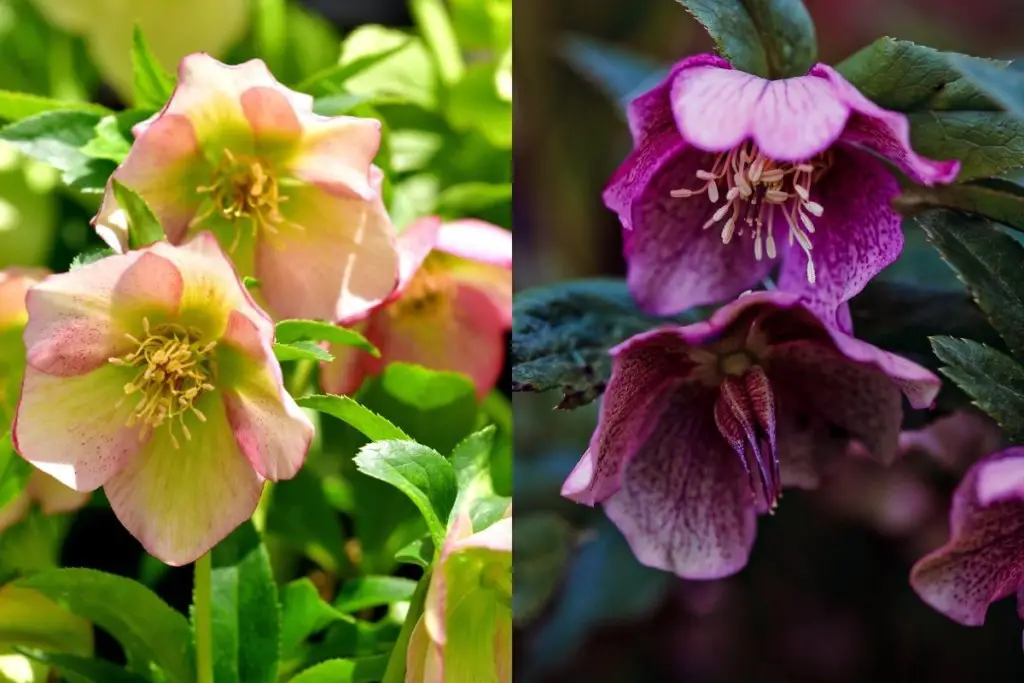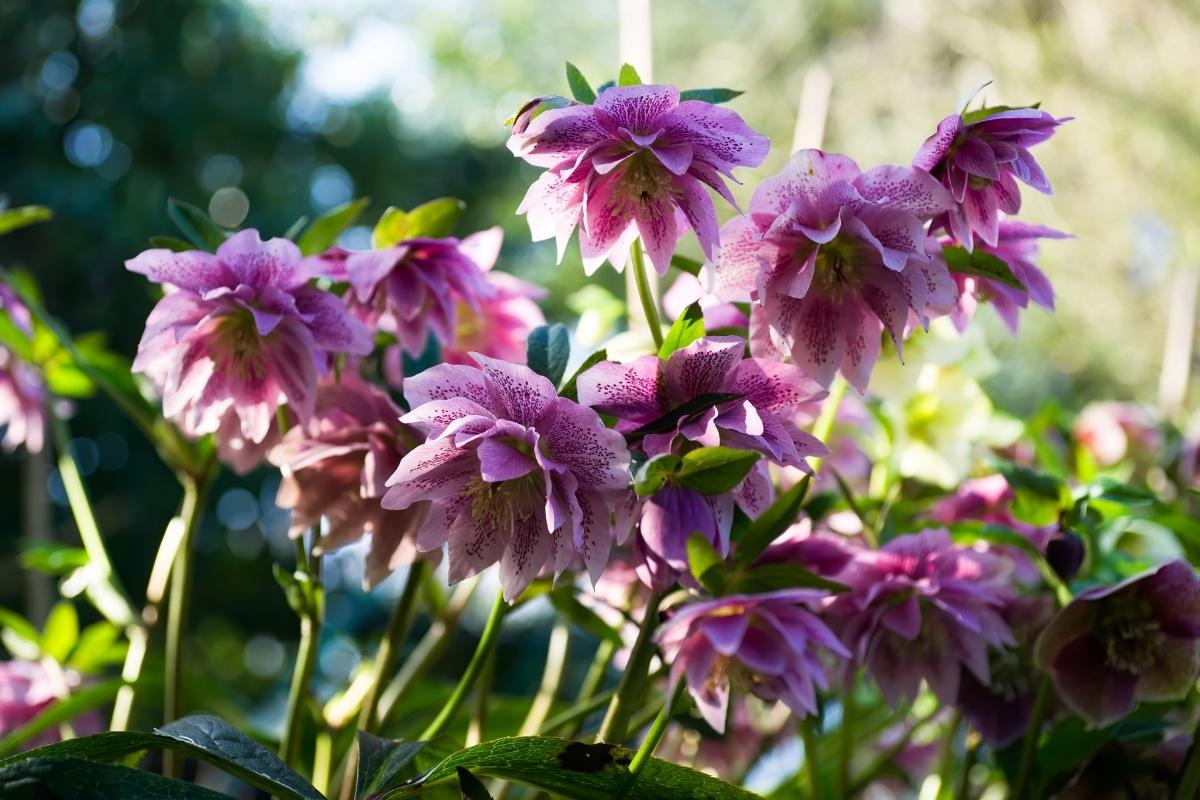Hellebores are tenacious plants that are capable of surviving in a wide range of climates and regions. They can survive in varying temperatures and sunlight conditions. We’re going to take a closer look at their specific needs to optimize their growth and reach their full potential.
Table of Contents
Hellebore Sun or Shade
In ideal conditions, hellebores will be resting within well-drained soil that has a reasonable amount of sunlight and shade. The balance between sunlight and shade is a little bit more important with hellebores because full sunlight throughout the day can actually overwhelm your hellebores and dry them out too quickly.
Another factor to consider is that they might not tolerate droughts very well, at least initially. They need to be fully established in their location before being able to handle dryer conditions for longer periods. The reason for this is that their root structure needs enough time to develop so that it sustains itself when it dries out.
Keep in mind that hellebores are native to central Europe, so optimal sun and shade conditions can be found in that region of the world. That doesn’t mean that they won’t thrive in slightly varied lighting conditions though and they may just make the perfect addition to your garden!
Do Hellebores Like Sun or Shade?
Hellebores have very different characteristics when compared to other types of plants. They are unique perennial flowers that require a moderate amount of shade due to the risk of drying out from an overwhelming amount of sunlight.
This requirement aligns with the fact that a hellebores’ soil should always be moist rather than dry. This helps prevent the possibility of the hellebores drying out. Which can be harmful if it has not had time to fully establish its root structure.
Will Hellebores Grow in Full Sunlight or Full Shade?
It’s certainly possible that a hellebore plant will grow in locations that experience full sunlight or full shade. The simple truth is that their native region commonly experienced moderate shade and sun, which presented a unique balance that allowed the hellebores nearby to thrive.
Too much shade can be just as harmful as an overwhelming amount of sunlight. As we’ve described throughout, it’s generally best to have hellebores growing in regions that experience a mix of sun and shade throughout the day.
Even if this is not a possibility in your location, hellebores can still tolerate alternative conditions. They may require additional maintenance to ensure their survival in these unideal regions. Keep in mind that it’s very important to ensure that the quality of the soil is up to the expected standards, regardless of the amount of sunlight that the hellebore receives.

Can Hellebores Get Too Much Shade?
More shade will generally result in fewer flowers being produced from the plant in the longer term. Some hellebores may even die if they don’t receive enough sunlight. If you’re looking for optimal flower growth, you’ll want to make sure that at least some sunlight is getting to the hellebore plant.
The real disaster starts if your hellebores are planted in unsuitable soil and they are not receiving enough sunlight. This combination can end in catastrophe for your hellebores. Likely resulting in the slow deterioration of their growth. However, some hellebore varieties, such as the Christmas rose, need more shade than other varieties. Source.
You don’t want to prevent your hellebores from receiving any sunlight. At the same time, you should try to make sure that they are planted in well-drained soil with moderate properties. In addition, they should not have their roots conflicting with other adjacent plants or this will harm their potential growth.
To learn more about the Christmas Rose click here.
Can Hellebores Tolerate Sun?
Too much sunlight reaching the hellebore can almost be as bad as too much shade. Some experts believe that hellebores can tolerate sunlight more easily than shade. There are types of hellebores that can handle more heat and sunlight. Heat tolerance is important, especially if you want your plant to be self-sustainable during droughts.
By watering them at set intervals, you can ensure that your hellebores tolerate the sunlight appropriately. Just remember that a partial amount of shade is always going to be more favorable to the plant’s overall growth.
What’s the Best Temperature for Hellebores | Hellebore Sun or Shade
During the daytime, hellebores are going to thrive in temperatures between 60 degrees Fahrenheit and 70 degrees Fahrenheit. Even if temperatures move slightly outside of this range, they should remain fairly tolerable to their local climate conditions.
At night, hellebores can handle temperatures as low as 40 degrees Fahrenheit. Longer-term growth within their root structures will occur during these colder temperatures at night.
Some hellebores have been observed in temperatures as low as 10 degrees Fahrenheit and they still managed to survive. However, it is not at all recommended to test your plant’s limits in these types of icy temperatures.
How Much Should You Water for Hellebores That Receive Full Sun?
One to two inches of water per week should be sufficient for a hellebore that is receiving full sunlight every day. The water can come from either natural rainfall or manual watering. Maintaining this level of water every week will boost your plant’s growth and enhance its longer-term potential. Hopefully, this has helped answer the question for hellebore sun or shade.
Related Questions
Why are hellebores so tolerant to conditions that may not be ideal?
Since hellebores are considered to be ‘hardy’, they can survive in frosty conditions with low temperatures. At the same time, they are also tolerant of droughts. They can survive in a variety of climates with relative ease. Their growth patterns from their native region have given them the traits that are needed to survive in a variety of conditions.
Why is partial shade the best for hellebores?
Partial shade is generally ideal for hellebores because full sunlight would require additional water to support the hellebore plant. Too little sunlight would harm the potential for flower growth and limit its full potential. Partial shade balances everything out nicely and allows for hellebore plants to reach their full potential when it is time to bloom.

